The Best Tips For Women Hiking Alone: How To Stay Safe
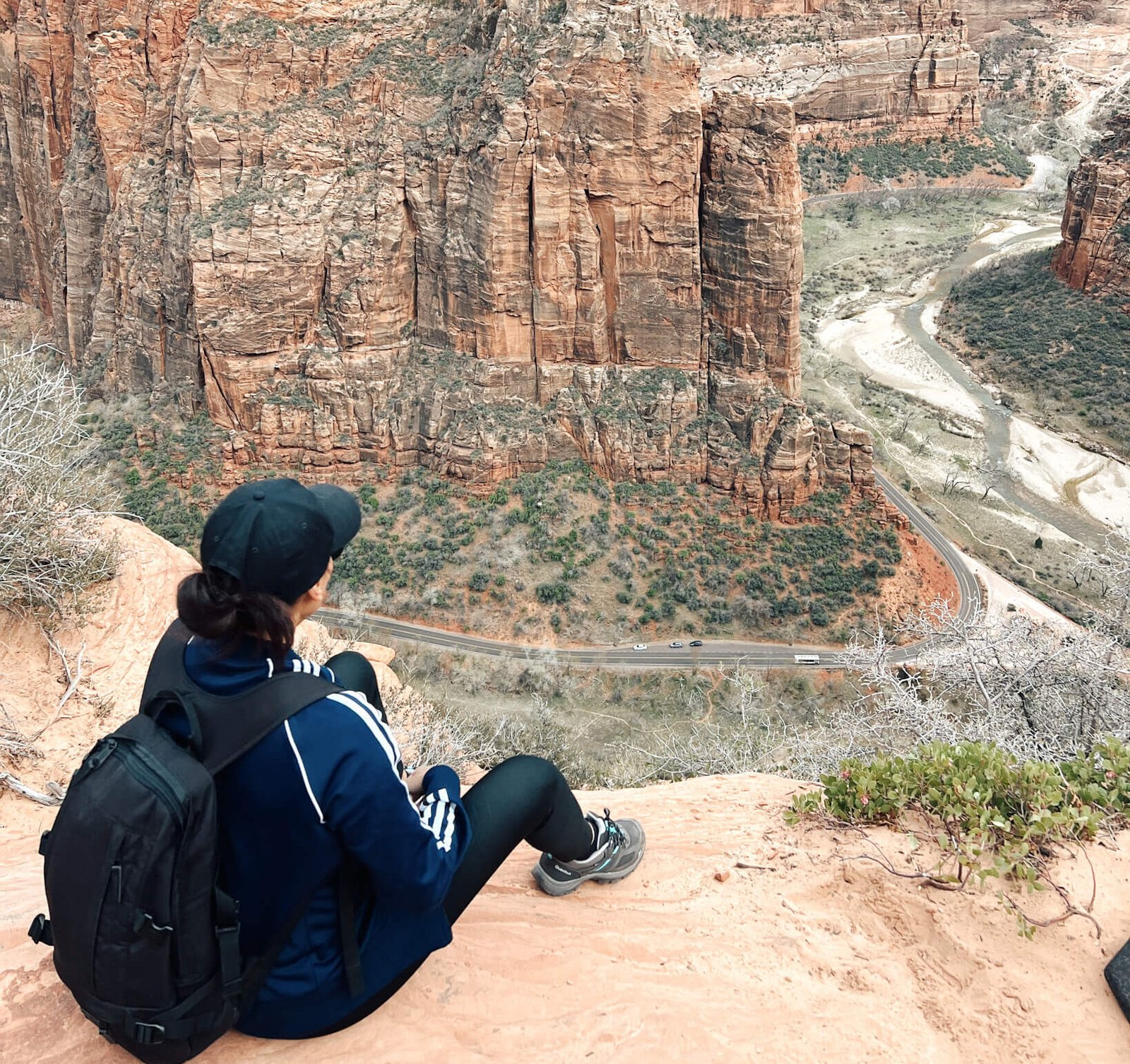
This post may contain affiliate links. That means if you click and make a purchase, I may earn a small commission at no extra cost to you. I appreciate your support!💙
Here are the best tips for women hiking alone! Not long ago, on a layover in Los Angeles, I had the brilliant idea to hike to the back of the Hollywood sign! I had it all planned out: waking up early wouldn’t be a problem with the time difference, and I envisioned enjoying a peaceful early morning hike.
However, a passenger living in Hollywood quickly brought me back to reality. He informed me that, although the trail is well-visited, it’s still quite deserted early in the morning. He advised against hiking alone due to the presence of wild animals like mountain lions and rattlesnakes and the risk of dehydration.
I had to abandon my plan since I couldn’t persuade any of my co-workers to join me. This experience got me thinking about the potential risks, even on popular hiking trails. I love hiking, especially when it’s quiet and serene. But it’s so important to practice certain safety measures when hiking alone!
>> Don’t forget to check out my 27 must-know safety tips for women travelling alone and travelling solo for the first time: a guide for women posts!
- 27 Proven Solo Female Travel Safety Tips That Could Save Your Trip
- Must-Have Guide for a Solo Female Road Trip: How To Stay Safe
- 11 Life-Saving Travel Safety Accessories for the Female Solo Traveller
- The Perfect 5-Day Itinerary To Seoul: See, Eat, and Explore It All!
- 30 Expert Solo Female Travel Tips You Want to Know Before Your First Trip
- Travelling Solo For The First Time: A Guide For Women
- How To Choose The Perfect Hotel In 5 Simple Steps For Solo Female Travellers
Plan Your Hike Properly
Planning your hike is the first step to ensure a safe and enjoyable solo adventure! There are great apps and websites with awesome hiking trails, such as AllTrails. As someone who loves hiking, I’ve learned that some preparation goes a long way.
You’ll need to be prepared even for a simple, short hike. As I said before, anything could happen.
Research the trail
Start by choosing the right trail for your skill level. There are plenty of resources online where you can find detailed trail descriptions and reviews. Websites like All Trails are fantastic for this. Look at the trail’s difficulty, distance, and terrain to make sure it matches your abilities.
Check weather conditions
Weather can make or break a hike, so always check the forecast before you head out. Pack accordingly – bring layers for changing temperatures and rain gear if showers are possible. I also recommend checking the weather a few days before and on the morning of your hike for any last-minute changes.
If the weather is going to be super hot, you’ll need to bring a lot more water!
Understand local wildlife
Knowing the local wildlife is essential for your safety. Research the animals you might encounter on your hike and understand how to react if you encounter them. As that passenger on my flight to Los Angeles told me, I could run into a mountain lion or get bitten by a rattlesnake. Yikes!
Knowing what to do if you see a mountain lion or rattlesnake can save your life. This knowledge keeps you safe and teaches you to respect the natural habitat, an important aspect in tips for hiking alone
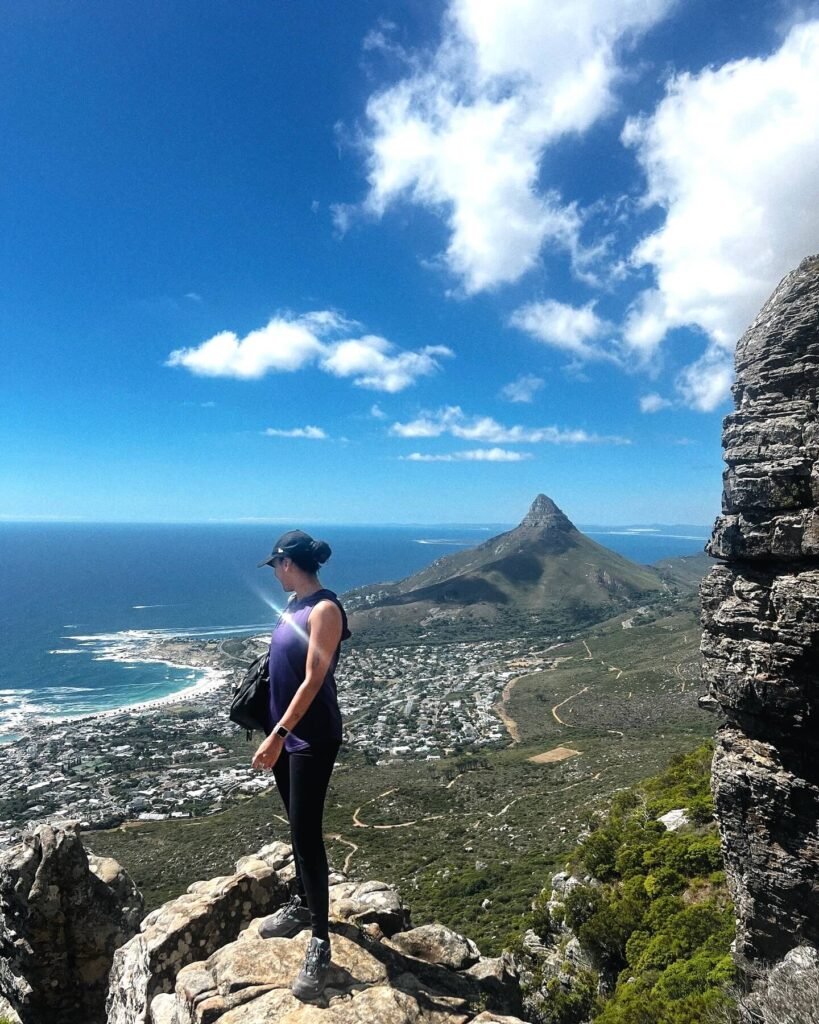
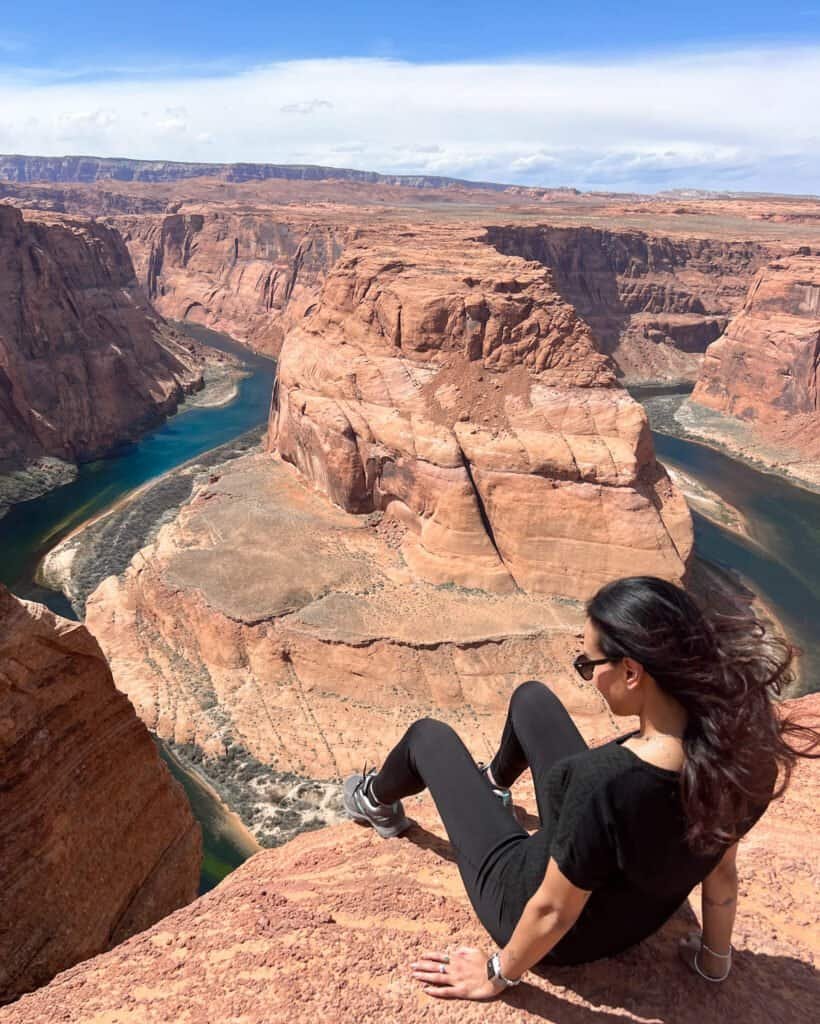
Safety Precautions when hiking alone
Share your plans
While I travel solo often, I’m guilty of not keeping in touch with the folks at home enough. But you should always tell someone where you are with any adventurous activities.
Always let someone know where you’re going and your expected return time. Especially for adventurous and long hikes in the middle of nowhere. Share your hiking route and any backup plans. This way, someone will know where to look for you if something goes wrong.
It’s easy to send a quick message to a friend or family member before I start my hike.
Know your limits
Be honest with yourself about your fitness level and hiking experience. It’s better to choose a shorter, easier trail and enjoy the experience than to struggle on a more challenging one.
Carry identification and emergency information
Always make sure you have your ID and a small card with emergency contact information and any important medical details on you! This can be crucial in case of an emergency.
Essential Gear For Hiking Alone
Packing the right gear is essential for a successful solo hike. Having the right equipment ensures not only your comfort but also your safety on the trail. Here’s a list of essential gear to think of.
Proper Hiking shoes
Investing in a good pair of hiking boots or hiking shoes is non-negotiable. Your footwear must be sturdy, supportive, and suitable for the terrain. Boots that provide good ankle support can prevent injuries on uneven ground.
I bought mine a few years ago, and I love them! Before, I was doing easy hikes with my Nikes on. The difference between sneakers and proper hiking shoes is mind-blowing. I couldn’t believe I hadn’t bought them sooner. You’ll walk better and have a better grip on basically any surface.



GPS
Even if you’re familiar with the trail, always carry navigation tools like your iPhone with Google Maps. Remember to download offline maps as a backup, which you can also do in AllTrails.
In many national parks, there is no service, so you have to rely on offline downloaded maps. I also suggest bringing a map, but let’s be honest—we don’t do that anymore.
30 Expert Solo Female Travel Tips You Want to Know Before Your First Trip
First aid kit
A first aid kit is one of those things you’ll be glad to have when you need it, especially on the road. Even if you just keep one in your car, make sure it’s well-stocked. Essentials include bandages in different sizes, antiseptic wipes, pain relievers like ibuprofen or paracetamol, and any personal medications you rely on.
Don’t forget a few travel-specific extras: Moleskine patches are a lifesaver for blisters after long walks, and a small pair of tweezers can help with anything from splinters to removing a tick after a nature hike. Bonus tip: toss in a mini thermometer and a few electrolyte tablets, just in case you’re feeling unwell or dehydrated.
Drink water and bring snacks
Staying hydrated is vital, so carry enough water for the entire hike. A water bottle is a good option; you can always refill it with bigger bottles. Some trails allow you to refill your water bottles, so check that in advance.
Pack high-energy snacks like nuts, dried fruit, and energy bars to keep your energy levels up. Always bring water and snacks, even if you’re not going on a long hike. I’ve experienced how easily the sun can make you thirsty! Do not underestimate Mother Nature!
Layered clothing
The weather can be unpredictable, especially in mountainous regions. Dress in layers to adjust to changing temperatures. Start with a moisture-wicking base layer, add an insulating layer, and top it off with a waterproof and windproof jacket. Don’t forget a hat and gloves when hiking in cooler weather.
During my hikes in Valley of Fire, I did a solo road trip from Las Vegas to Utah, it was very cold in the mornings. The weather was hot as soon as the sun came out, around midday. The temperature change can be huge!
Light source
A headlamp or flashlight with extra batteries is crucial for visibility, especially if your hike takes longer than expected. We all have our iPhones with a flashlight. But what if your iPhone dies? What if it falls and breaks? What if you do get lost for some reason?
A small battery-operated flashlight is easy to take along. It’s also wise to check sunset time. I’m used to sunset around 9 PM in summer, but in other countries this can be a lot earlier, like 6 PM.
Tips for hiking alone: Personal Safety
Self-defense items
Carrying self-defence items can provide peace of mind and protection in unexpected situations. I always pack a few key items I have on me most of the time, anyway!
- Pepper spray is easy to carry and use and can deter potential human or animal threats. As far as I know, pepper spray is only allowed in the USA. So please check the law wherever you are using pepper spray!
- Personal safety alarm: These small devices make a loud sound when activated, startling potential threats and alerting others nearby. They’re always good to have on you wherever you go!
Trust your instincts
One of the most powerful tools for staying safe is your intuition. Trust your gut feelings about people or situations. If something feels off, it probably is.
- Interactions with strangers: While most people you meet on the trail are friendly and harmless, it’s important to remain cautious. If someone’s behaviour makes you uncomfortable, distance yourself and be prepared to use your self-defence items.
- Unusual trail conditions: If a trail seems unsafe due to weather, wildlife activity, or other factors, consider returning or taking an alternative route. You do not want to get caught in bad weather and not be able to find your way back!
Look for busy trails
While a quiet, peaceful hike can be one of the joys of hiking, it’s safer not to choose the most adventurous hikes in the middle of nowhere alone! Unless you’re a professional hiker (is that a thing?) and have obtained any Bear Grylls skills, maybe.
Plan your hikes during times when trails are more frequented by other hikers. Early morning and late afternoon tend to be popular. Opt for trails that are known to be busy, especially if you’re new to solo hiking.
Popular trails provide company, better-maintained paths, good signage, and more frequent patrols by park rangers.
Stay alert
Staying alert and aware of your surroundings is always important, but it can be crucial when hiking solo. Remove headphones from your ears and pay attention to the environment around you. I call this skill ‘situational awareness’.
Also, regularly check for trail markers to ensure you’re on the right path. On some trails, it’s easy to get turned around. Always check if the area map is properly downloaded on my iPhone. While Joshua Tree National Park isn’t very dangerous, it can be if you’re not taking it seriously.
You could easily get on the wrong trail by accident and end up on a two-hour hike, and you forgot to bring water. Again, it’s very dramatic, but anything could happen!
How to prepare for your first hike
If you want to start hiking alone because nobody wants to tag along with you, I can only applaud you! This is the first step! Start by building confidence with shorter, less challenging hikes before tackling longer, more difficult trails.
Familiarise yourself with hiking solo in safe, well-travelled areas, like a great hiking trail in your hometown. Look for hiking trails in national parks and state parks, which often have easy trails. Just don’t do anything stupid.
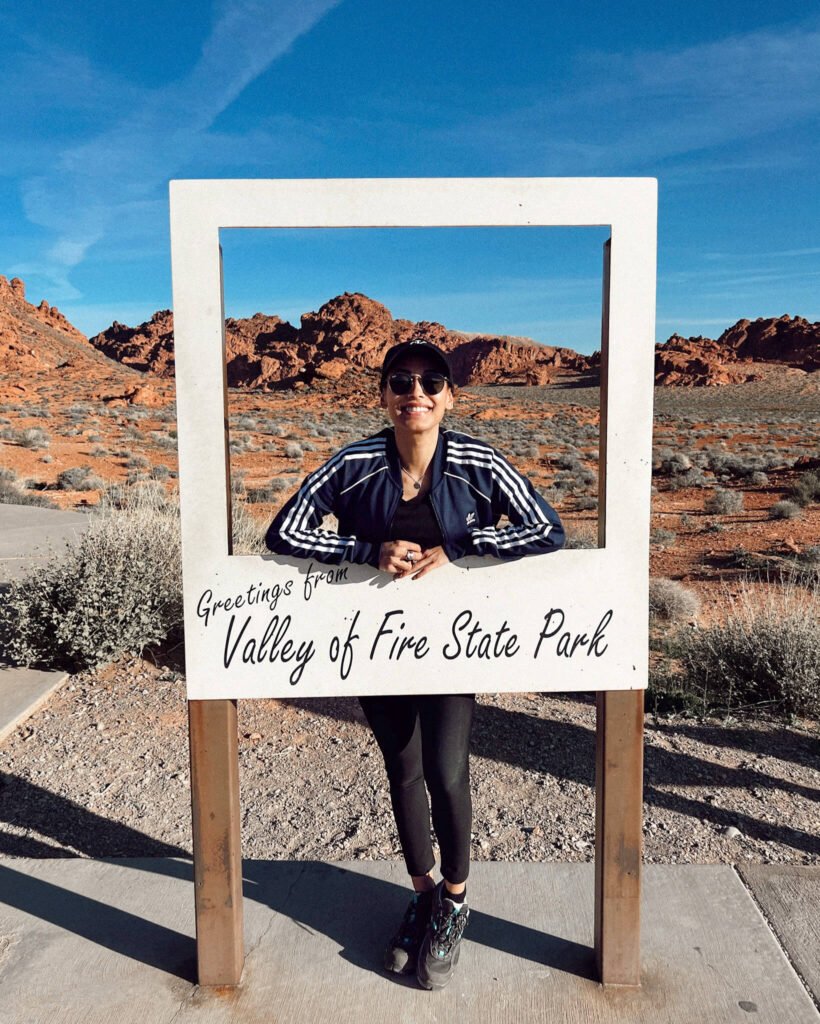
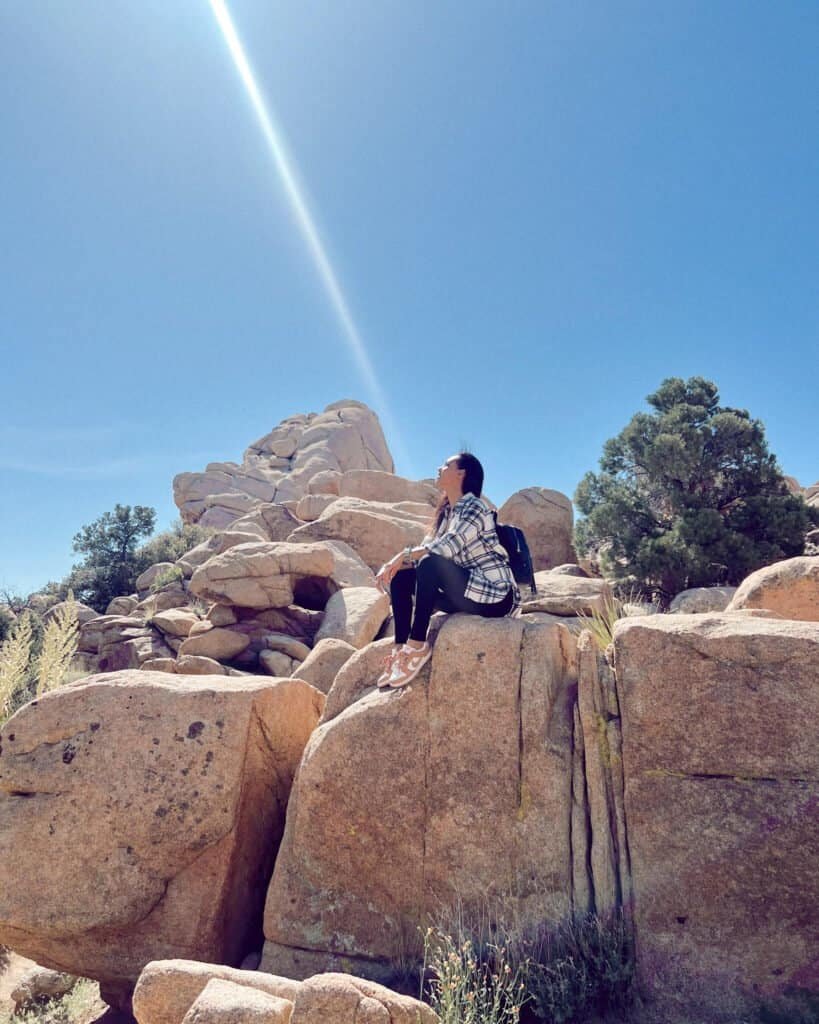
Mental Preparedness
Mental preparedness is just as crucial as physical preparation for a solo hike. Although hiking alone can be a profoundly rewarding experience, it requires mental strength and resilience.
If I’m hiking early in the morning, I love to find a nice, quiet spot and practise a short meditation or mindfulness exercise.
Mindfulness practices
A positive mindset can make all the difference. Embrace the solitude and use it as an opportunity for self-reflection and mindfulness. Focus on the beauty around you and the joy of the journey.
It’s normal to feel anxious sometimes, but remember why you chose this adventure and what personal growth it offers.
Practice mindfulness to stay present and calm. Techniques such as deep breathing, meditation, or simply appreciating natural beauty can help maintain mental clarity and reduce stress.
Plan your trip
With my online resources
Use my travel planning roadmap with all my digital resources to book every detail of your trip!
Hiking is the best solo activity! Don’t ask me to go for a run—I’ve never been a fan. But if you want to walk, hike, or bike somewhere, count me in!
All these solo hiking tips for women are really about taking the right safety precautions and planning. I still believe it’s often better to tackle adventurous hikes or activities with a guide or group.
Travelling solo doesn’t mean we need to push our boundaries or take unnecessary risks. Even if you’re an experienced hiker, always plan. Be well-prepared and enjoy the incredible beauty this world has to offer!





